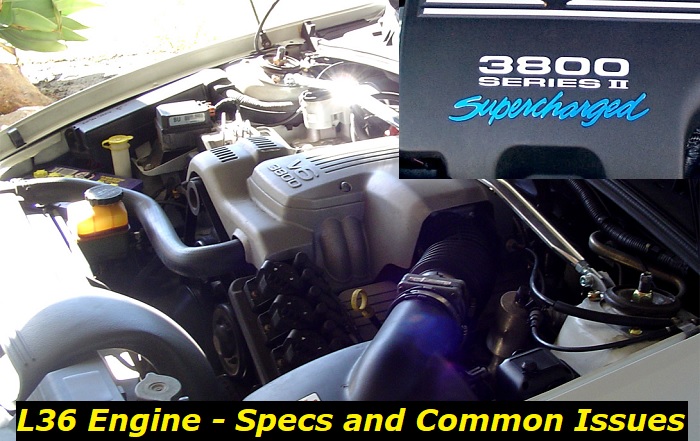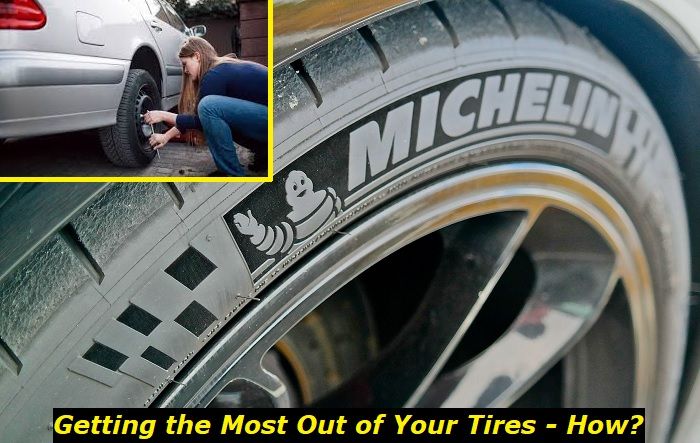The L36 engine, popularly known as the 3800 Series II engine, came into the market in 1995. The engine is sturdier than series I engines. It can withstand a massive impact. Unknown to many, the engine is bulletproof. Compared to its predecessors' architecture, L36's architecture allowed the engine to exhibit excellent power, better revving, and quieter operations. L36 also has an enviable fuel efficiency rating.
Its build and ability to withstand massive impact, including a bullet's impact, made the engine famous. It also holds the record as the most produced and popular 3800 engine.
There is more to the L36 engine. The article further addresses the engine's performance, mileage, reliability, and problems.

Key facts and my opinion about the engine
- Production years: 1995-2005
- Average lifespan of L36: 260,000-300,000 miles
- Fuel supply type: port injection
- Power range: 195-205 hp
- Fuel efficiency: average
- Engine block material: cast iron
- Engine reliability score: high
- The most common problems: coolant leaks, sensors aren't durable, ignition coils aren't durable, fire risk recall in 2009
L36 Engine Specs and Performance
- Capacity and Length
The engine comes with a 3791cc or a 3.8-liter displacement. It retained its predecessor piston stroke length /cylinder bore ratio of 3.4" (86.4mm) by 3.8" (96.5mm).
- Fuel Injection
The engine features an MPFI (multi-point fuel injection) system. The MPFI system allows the L36 to deliver the exact amount of fuel needed by each cylinder.
The MPFI system leads to improved fuel efficiency.
Vehicles powered with L36 engines exhibit low carbon emissions due to the MPFI system. The precise fuel delivery allows uniform fuel-air mixtures and a clean exhaust system. Therefore, producing less toxic emissions.
The MPFI also leads to improved engine performance. The multi-fuel injection improves the engine's response to deceleration and acceleration prompts.
The MPFI system is one of the components that makes it possible for the engine to have a smooth and powerful performance.
- Weight
Apart from the MPFI system, the L36 engine is lightweight. It comes with an iron cast body. It also has a shorter deck than its forerunners.
The reduced packaging and engine weight led to a lighter engine. It is 12 kg less heavy than the previous versions and 10 kilograms heavier than the popular aluminum V6 engine despite being an iron-cast engine.
The lighter weight improves the engine's performance.
The lighter weight boosts the vehicle's maneuverability. It also allows a better response to acceleration and deceleration. L36 also exhibits an efficient mileage capacity.
It also minimizes the engine's likelihood of experiencing unexpected wear and tear.
The lighter weight also allows the engine to have better fuel efficiency. The 12kg weight reduction leads to a significant fuel economy improvement in 3800 series II engines.
- Power
The L36 engine is rated at 170 horsepower at 218 pound-foot of torque. Its supercharged version has 205 horsepower with 230 pound-foot of torque but can also go up to 240 horsepower.
It also exhibits a high torque during low revolutions per minute. The engine can generate more horsepower at lower revolutions per minute. Therefore, it's possible for any vehicle fitted with an L36 engine to tow items right from a standstill.
Compression
The engine's compression equals its power. The L36 has a sizable compression ratio of 9:4:1. One of its antecedents, the L27, has a compression ratio of 9:0:1.
When seeking an engine, go for high compression ratios. The engine generates its power when combustion deploys a force on the engine's piston and presses the piston down into the cylinder as the stroke expands. The combustion process exerts more force as the piston goes high up into the bore. Thus, a bigger compression ratio shifts the piston higher to the bore's top (dead center). Hence, it produces extra force directed to the expansion stroke. When the combustion process generates additional force without needing an increased fuel consumption, it gives the engine better fuel efficiency.
In simple terms, a high ratio means the engine spawns more power without consuming extra fuel. Therefore, you get a powerful engine with good miles per gallon.
L36 Engine Reliability and Mileage
- Reliability
Two main issues that cause engine wear and tears are friction and heat. Thankfully, due to its lightweight, low friction, and short skirt piston, the L36 is quite a reliable engine.
It is dependable and inexpensive. Its longevity reckons on how you maintain and drive your car. The state of your engine's air filters, valve train, exhaust restrictions, compression, fuel pumps, and injectors will affect the durability and reliability of your L36.
The engine will need regular oil and coolant changes to maintain low friction and tolerable heat levels. You'll also need to ensure your fuel injector remains unclogged and that the fuel pump can withstand the pressure. With proper and regular maintenance, the L36 engine can go up to 300,000+ miles without experiencing severe engine issues. Besides, it's easy and cheaper to maintain the L36 engine.
The L36 engine can also withstand the poorest maintenance. In addition to this, it is easy and affordable to get replacement parts. Simple tunes to the engine are also inexpensive.
Apart from the low friction, the engine has firm connecting rods and firm electronic throttle control. The sturdier electronic throttle control gives the vehicle a better throttle response. It makes maneuverability easier, hence preserving the engine.
- Mileage
The L36 engine is fuel-efficient because of its high torque during lower revolutions per minute. L36's final drive ratio is low. Therefore, it yields an efficient transmission.
Also, its lightweight, overall low friction in its internal components, and direct fire ignition facilitate fuel efficiency.
For a highway mileage of 65 miles per hour, the engine depicts a gas mileage of approximately 22-30 mpg for standard L36 during the summer. Some L36 engines retain the low 20s while others sustain the high 20s to low 30s. Your mileage often relies on your final drive ratio. A lower ratio allows better gas mileage. However, the gas mileage may drop during the winter.
Its city or town mileage is 15- 18 mpg on standard gas. The mileage is due to lots of accelerating, decelerating, and stopping when driving around town or the city.
The Common Problems Associated With the L36 Engine
- Coolant Leaks
Many drivers report coolant leaks in L36 engines. The leak often emerges from the driver's side. Other times the leaks may come from behind the radiator. In some cases, the driver cannot pinpoint the leak's location.
At times the coolant may fail to go directly to the engine. When this happens, the driver may notice steamy or whitish smoke from the exhaust system. The driver may also notice a reduction in the coolant level. Other times the driver may fail to see visible signs of leaks. However, in this scenario, the engine performance will be notably low. You may also notice a high figure on the temperature gauge.
Any coolant issue on your L36 often comes from the engine intake manifold. A notable weakness of the L36 engine is its intake manifold. It has a paper-thin wall that weakens once you hit 60,000+ miles.
Fix
Before rushing to fix any part of your engine, remove the manifold. You'll see a hole close to ? inches beneath the throttle. Check the hole. Do you see a faded section? Perhaps you've noticed cracks. The intake deteriorates when you approach 60,000 miles. You can easily cut out the faded part or use an adhesive to seal any cracks.
- Misfires
Random misfires while driving are frequent with the L36 engines. The random misfires may be because of worn-out spark plugs or weak coils in your L36.
Fix
Therefore, you may need to remove and check the spark plug. Replace it if it is worn out.
Also, check the ignition wires. The ignition wires may produce high resistance if you've hit 100,000+ miles. The high resistance may cause cracks or loose fitting wires. The resistance can also result in random misfires as you drive. So, replace damaged wires and retighten any loose wires. But if they are fit and have no cracks, don't replace them.
You can also use an OBD II scanner to check for misfire codes.
- Engine Noises
Drivers have reported noises while driving at high speeds. Some also complain of hesitation when accelerating. The problem often crops up when the automatic torque converter doesn't send an error code.
The noises often come from the engine's throttle piston sensor (TPS). The faulty TPS sends defective data or input to the car's powertrain control module (PCM).
Fix
You'll need to fix or change the TPS sensors.
- Trouble Starting
There have been several reports of resistance or trouble starting the engine. The start issues could be a result of a faulty crankshaft position sensor. It could also be a damaged ignition control module (ICM).
Check the engine's wiring to see whether there is a fault with your CPK sensor or ICM. Begin by testing the voltage on your engine's wiring system. You should see a reading of 4 to 8 volts between the sensors. Anything beyond or below 4-8 volts indicates faulty CPK sensors. Also, scan it with the OBD II scanner.
Fix
Replace the sensors if the voltage test or OBD scanner indicates faulty CPK sensors.
Final Thoughts
Although our engines are not at risk of attacks since assemblers hide them under the hoods of our cars, the L36 engine can withstand bullets. It's not heavy. Hence, showing an outstanding performance advantage over other 3800 series engines. L36 also has a good fuel economy. Like any other engine, it also exhibits a share of its flaws and problems. It is vulnerable to random misfires, coolant leaks, engine noises, and trouble starting. Regardless of these issues, it's a great engine. Sadly, the sturdy and reliable L36 will soon become extinct.
About the authors
The CarAraC research team is composed of seasoned auto mechanics and automotive industry professionals, including individuals with advanced degrees and certifications in their field. Our team members boast prestigious credentials, reflecting their extensive knowledge and skills. These qualifications include: IMI: Institute of the Motor Industry, ASE-Certified Master Automobile Technicians; Coventry University, Graduate of MA in Automotive Journalism; Politecnico di Torino, Italy, MS Automotive Engineering; Ss. Cyril and Methodius University in Skopje, Mechanical University in Skopje; TOC Automotive College; DHA Suffa University, Department of Mechanical Engineering






Add comment